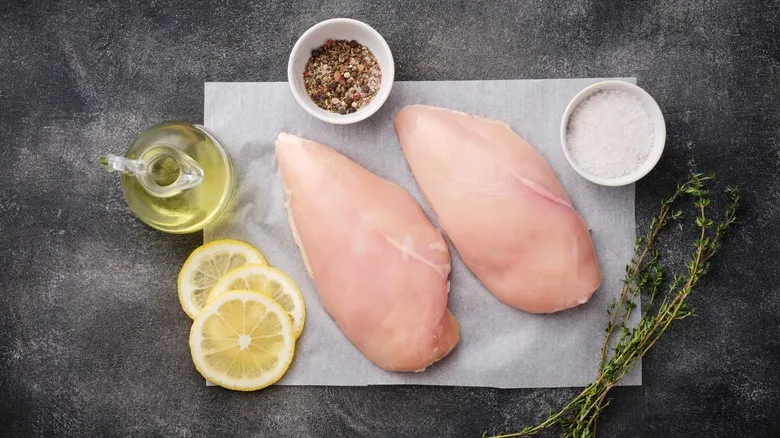Why cooking in parchment paper works so well
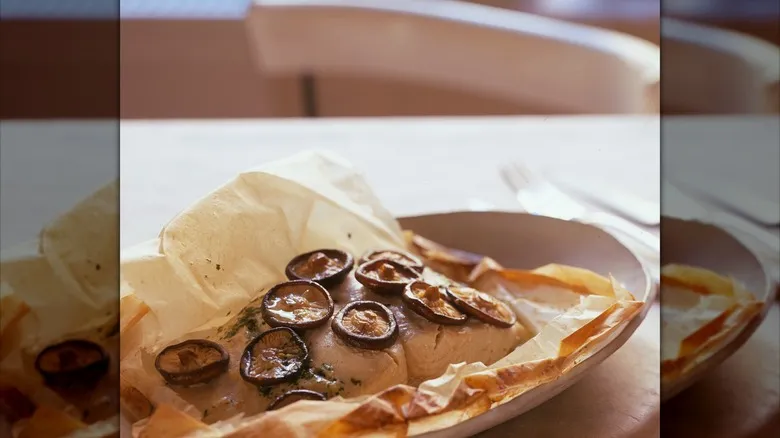
This method is effective because the sealed pouch retains the natural moisture present in lean meats, along with any additional moisture from citrus slices or vegetables, creating steam that cannot escape. This not only accelerates the cooking process but also infuses the meat with moisture and flavor. The sealed pouch cooking technique enhances the flavors and aromas of any added ingredients in a way that baking in an open dish cannot achieve. The resulting chicken breast will be juicy, tender, and richly flavored, with no need for extra oil (unless desired).
Wrapping individual chicken breasts in their own parchment paper envelopes also allows for a creative presentation. You can cut open the packets as soon as they come out of the oven or unveil them at the table to release enticing aromas that will delight your guests. Place the entire packet on a plate or in a bowl, and once opened, the paper can be spread out to reveal the chicken, creating a rustic and visually appealing display.
Another advantage is that cleanup is much simpler. Just as lining a baking sheet with aluminum foil makes cleanup easier, everything is contained within the parchment paper, which is both water-resistant and durable. While it may seem unusual to put paper in a hot oven, it is specially treated for this purpose. After removing the meat and any vegetables you wish to keep, you can simply lift the entire package and dispose of it in the compost bin or trash.
Tips for cooking chicken breast en papillote
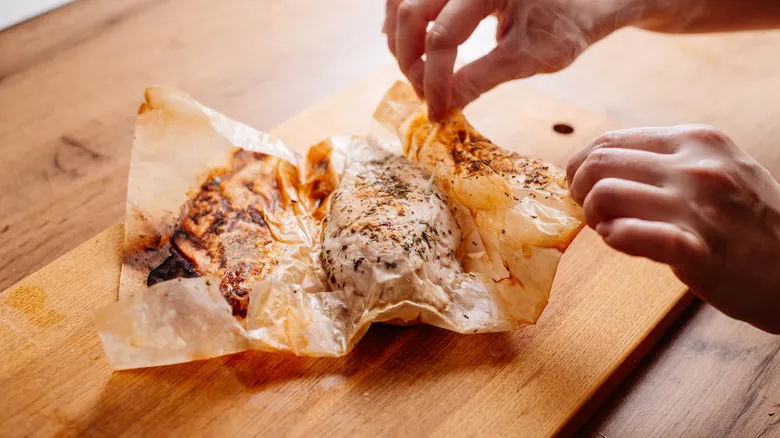
The key to successfully cooking chicken in a parchment packet is ensuring a tight seal all around, which keeps the steam and juices contained. A traditional method for achieving this is to fold the parchment paper in half and cut out a half-heart shape, similar to crafting a Valentine's Day decoration. Make sure the paper is large enough so that when you place the chicken and seasonings on one side of the heart and fold the other side over, you can crimp the edges securely while leaving a small pocket for steam to accumulate.
Before sealing the packet, add herbs, spices, citrus, vegetables, and any additional liquids. While it's not essential to include a splash of lemon juice or wine, doing so can add moisture and enhance the flavors of the other ingredients. Interestingly, although "en papillote" translates to "in paper," many experts agree that aluminum foil can also work effectively.
It's important to remember that meat won't brown using this technique. If you desire a bit of color, consider briefly searing it in a pan or on a hot grill. To check for doneness, minimize steam loss by inserting a digital thermometer, such as the Alpha Grillers instant-read meat thermometer, through the folded (not sealed) edge into the center of the breast, ensuring it reaches 165 degrees Fahrenheit. If it’s not done, press the pierced packet against your baking dish and continue cooking.
Recommended
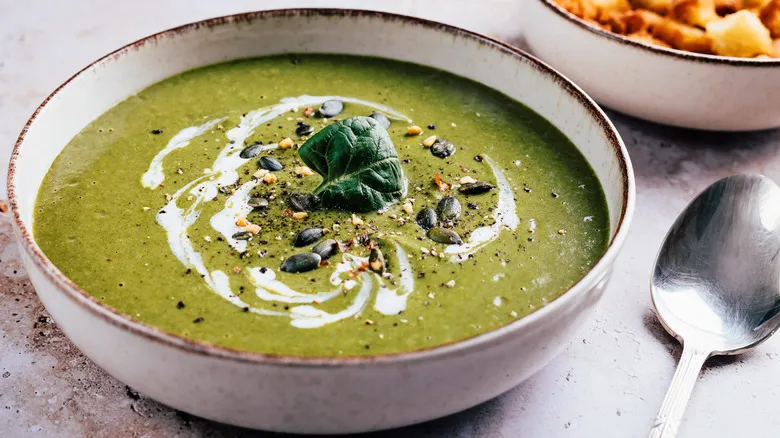
Your Soup Is Good — Creative Toppings Make It Better

How To Properly Butterfly A Chicken Breast

Yes, The Pasta Queen Approves Of Using Canned Tomatoes. Here's Why
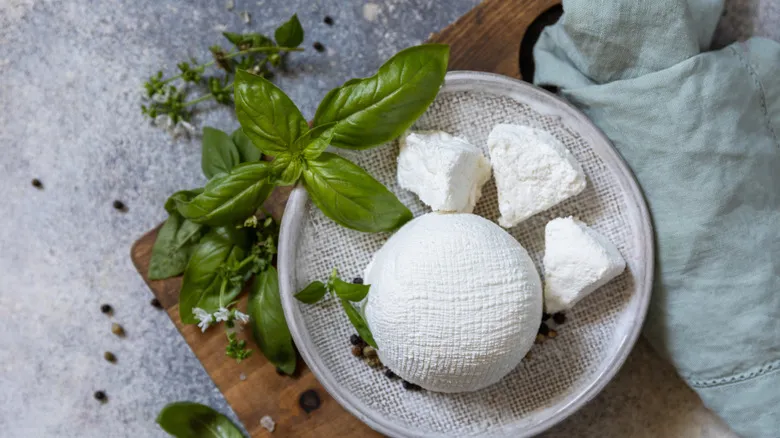
Ricotta Vs Cottage Cheese: Are They Interchangeable?
Next up

